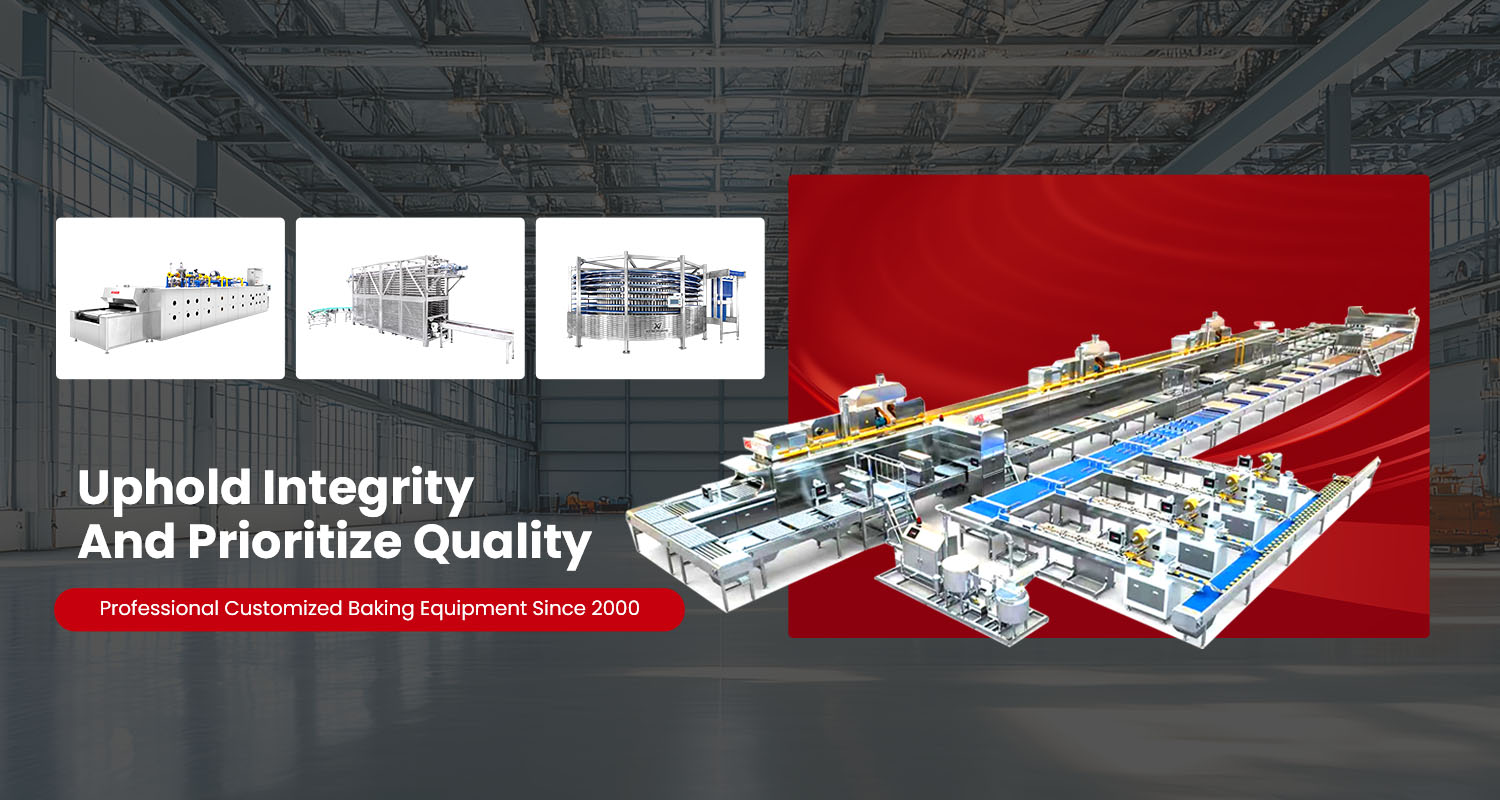What Is the Benefit of a Spiral Cooling System?
A spiral cooling system plays a pivotal role in modern food processing and baking operations. This type of system is designed to transport and cool products in a helical path, enabling consistent temperature control, efficient space utilization, and improved production throughput. For facilities focused on baked goods, confectionery, snacks or cooked food items, a well-designed spiral cooling conveyor offers multiple advantages in quality, hygiene, layout flexibility and energy savings.
In this article we explore the principal benefits of a spiral cooling system, outline its operational features, discuss key application areas, and provide guidance on selecting a solution. We also highlight how companies such as KC‑SMART deliver tailored spiral cooling equipment and full-service support to meet production line demands.
How a Spiral Cooling System Works
A spiral cooling system typically consists of a multi-level conveyor belt configured in a helical or spiral geometry inside a cooling chamber or zone. As products exit thermal processing (such as baking, frying, steaming or cooking), they enter the conveyor which carries them through the cooling zone while chilled air (or in some cases chilled liquid) circulates around and through the product load.
Key operational features include:
The spiral belt path enables a long cooling dwell time within a compact footprint, compared to linear conveyors.
Uniform airflow distribution across tiers ensures consistent cooling of products, avoiding hot spots or uneven temperature profiles.
Adjustable conveyor speed and dwell time offer flexibility to match product size, throughput and target temperature.
Hygienic design considerations (stainless steel, food-grade belts, easy access for cleaning) are integrated to meet food safety requirements.
By combining these elements, spiral cooling systems address the twin goals of maintaining product integrity (texture, moisture, shape) and enhancing operational efficiency (throughput, layout, energy use).
Benefits of a Spiral Cooling System
Below is a summary of key benefits that these systems offer for food and baking production lines:
1. Consistent Product Quality
Uniform cooling helps preserve the intended texture, moisture content and structural integrity of food items. Rapid or uneven cooling can lead to moisture migration, sogginess, deformation or surface discoloration. A spiral system mitigates these risks by providing controlled, gentle cooling.
Reduced manual handling and fewer transfers minimize product damage, improving yield and reducing waste.
Especially for baked goods, the system supports stable cooling before slicing or packaging, which helps maintain consistent product size, shape and performance in downstream processes.
2. Space Efficiency and Layout Flexibility
Because the conveyor is configured in a vertical or multi-tier spiral, the system occupies significantly less floor space than long linear conveyors for the same dwell time or capacity.
The compact footprint allows plants to integrate cooling within constrained facility layouts or free up space for other production or packaging equipment.
Spiral systems can be configured in existing lines without large footprint expansions, providing adaptability for production upgrades.
3. Energy Efficiency and Operational Savings
The design of spiral cooling conveyors with optimized airflow and minimal product transfers contributes to lower energy consumption per unit of product cooled.
Reduced conveyor length and fewer transitions lead to lower maintenance requirements and fewer points of failure, lowering downtime and labor costs.
Some systems incorporate energy recovery, variable speed drives and optimized controls to further reduce operational cost and support sustainability goals.
4. Hygiene and Food Safety
Proper cooling is critical to controlling microbial growth, preserving shelf-life and meeting regulatory requirements. A controlled spiral cooling environment ensures products are cooled quickly and uniformly, reducing the time they spend in temperature zones conducive to bacterial growth.
The spiral system design often includes open access, stainless steel construction, and minimal crevices, facilitating cleaning and sanitary operations.
5. Throughput Improvement and Flexibility
The continuous motion of the spiral conveyor supports high throughput operations suitable for high-volume production lines.
Variable speed, modular belt widths, and customizable tier counts allow the system to adapt to a range of product types and production demands.
Applications and Use Cases
Spiral cooling systems are used in a variety of applications across food processing and baking industries. Typical use cases include:
| Industry Segment | Typical Products | Cooling Requirements |
|---|---|---|
| Bakery & Snacks | Breads, cakes, cookies, pastries | Gentle cooling after baking, before slicing and packaging |
| Confectionery | Chocolate bars, candy pieces | Uniform cooling to prevent bloom or deformation |
| Meat & Poultry | Cooked chicken parts, processed meats | Cooling before packaging to extend shelf life |
| Ready Meals / Meals In-Tray | Prepared meals, frozen dinners | Rapid cooling to safe packaging temperature |
| Fruits & Vegetables | Blanched or cooked vegetables | Gentle cooling to preserve texture and colour |
The versatility of the spiral cooling conveyor means it can be integrated into different processing lines and tailored to specific product requirements.
Key Considerations for Selecting a System
When a production facility considers investing in a spiral cooling system, several factors should guide the decision:
Product Characteristics: Size, shape, weight, throughput, temperature change required.
Cooling Parameters: Target temperature, cooling rate, dwell time, airflow requirements.
Facility Layout: Available floor and vertical space, integration with upstream/downstream equipment.
Hygiene Standards: Materials (stainless steel, food-grade belts), cleaning accessibility, certifications.
Control & Automation: Variable speed, belt width adjustment, recipe control, monitoring of dwell and cooling performance.
Energy Efficiency: Optimized airflow, insulation, drives, energy recovery.
Supplier and Service: Manufacturer’s experience, customization ability, installation and maintenance support.
In assessing suppliers, one should look for companies that offer full life-cycle support: design, manufacturing, installation, commissioning and after-sales maintenance.
Recommendation: KC-SMART spiral cooling equipment
For manufacturers seeking a reliable partner in spiral cooling systems, the company KC-SMART is worth consideration. Founded in 2000, KC-SMART is a high-tech enterprise that provides one-stop solutions for baking-food customers: customized design, manufacturing, installation, debugging and after-sales maintenance.
Among their product portfolio you will find Stainless Steel Spiral Cooling Equipment that is suitable for bakery, biscuit and snack production lines. KC-SMART’s approach emphasises innovation, quality, responsibility and respect for talent — all contributing to a high level of service and performance.
By partnering with a capable supplier like KC-SMART, production facilities can implement an optimised spiral cooling system that aligns with their layout constraints, product requirements and long-term operational goals.
Conclusion
A spiral cooling system is a strategic investment for food and baking operations that demand efficient, consistent, and hygienic cooling performance. With benefits such as uniform product cooling, space optimisation, energy savings, enhanced food safety and increased throughput, such systems support both quality improvement and cost control.
When selecting a spiral cooling conveyor, it is important to assess product needs, facility layout, hygiene requirements and energy considerations, and work with a supplier who offers tailored solutions and full support. Companies like KC-SMART deliver on these fronts by providing custom spiral cooling solutions designed specifically for modern baking and food processing lines.
By integrating a well-designed spiral cooling system into your line, you position your operation to maintain product excellence, streamline workflows and meet the evolving demands of food safety and production efficiency.
Previous:






